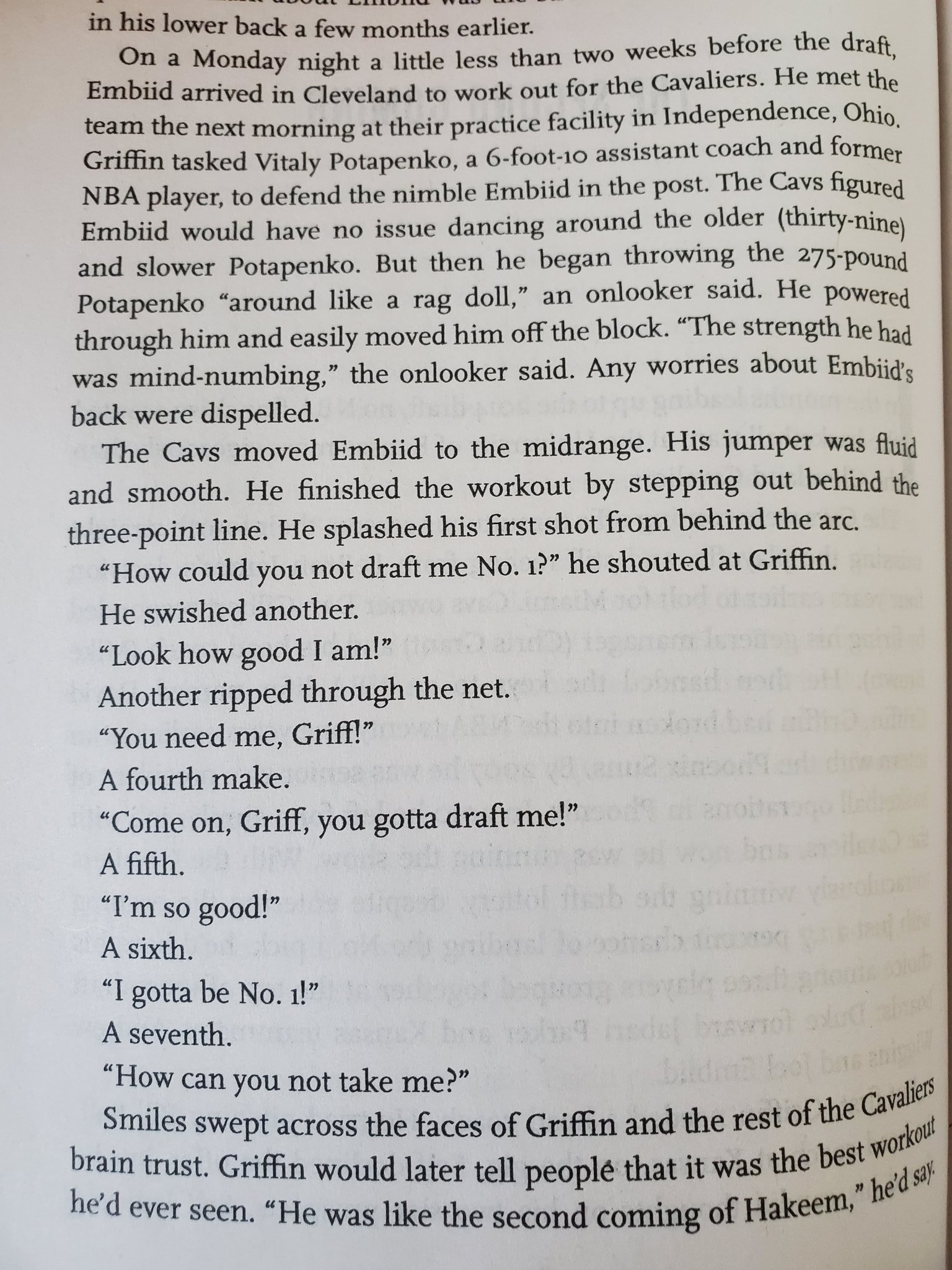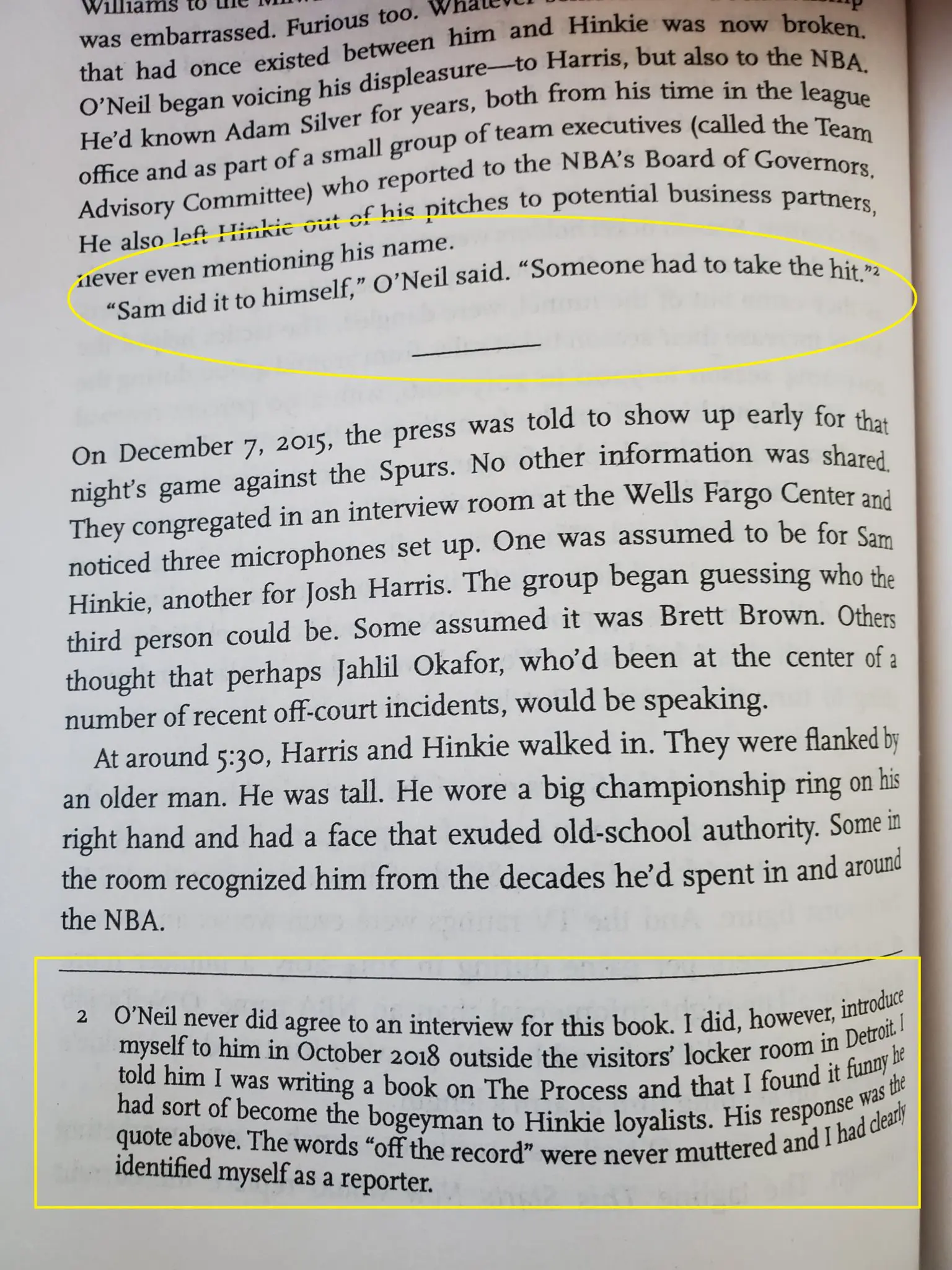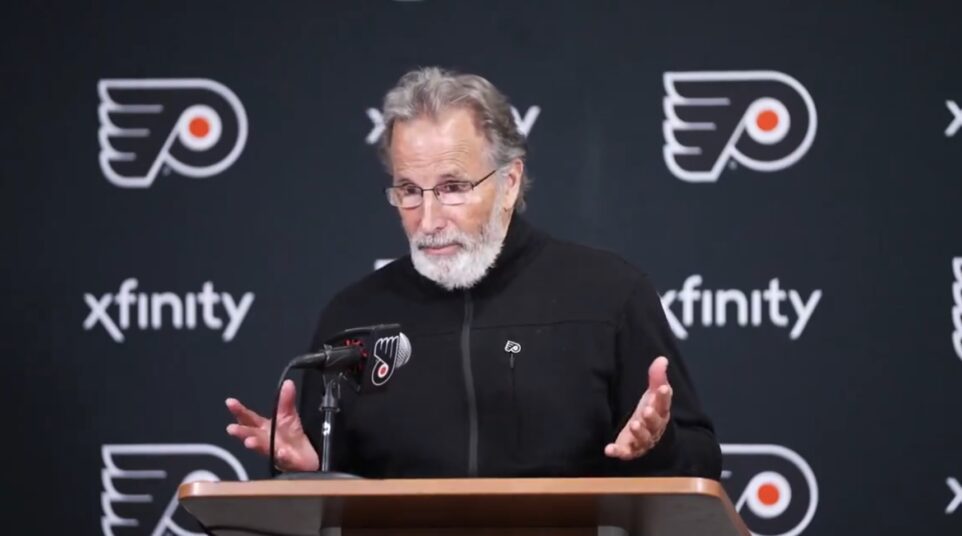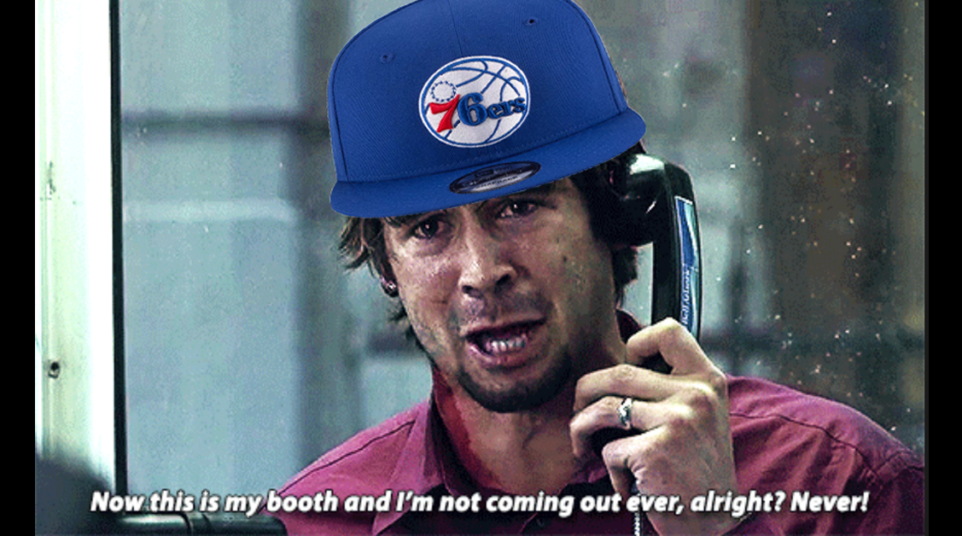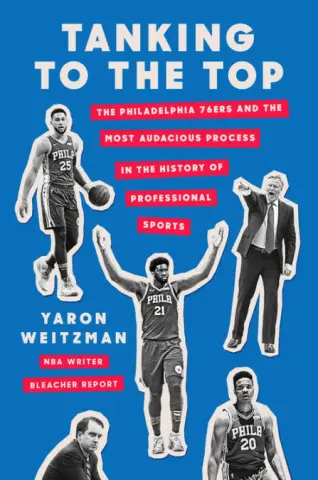
Book Review - "Tanking to the Top," by Yaron Weitzman
Ask Yaron Weitzman and he’ll probably tell you that his book is coming out at an unfortunate time.
It’s called Tanking to the Top, “The Philadelphia 76ers and the most audacious process in the history of professional sports.” The problem is that the Sixers aren’t anywhere near the top right now, and are embroiled in one of the more frustrating and exhausting seasons any local team has given us in recent years, so Weitzman of course was bombarded with people asking him about the title, to which he replied:
As I've said before, "Tanking To Three Straight Second Round Playoff Losses" doesn't exactly have quite the same ring https://t.co/CKUplDVn90
— Yaron Weitzman (@YaronWeitzman) February 28, 2020
The topic of Sam Hinkie and the Process will likely be relevant as long as Ben Simmons, Joel Embiid, and Brett Brown remain with the Sixers. We constantly re-litigate the Process in this city, and with the team not playing very well right now, this is as good a time as any to dive into Yaron’s book, which is available for pre-order and will officially be released on March 17th. We got an advanced copy to look over.
The story begins before the Process even does, which I think is relevant and had to be inclused. The first three chapters, which comprise about 50 pages total, takes us through the end of the Allen Iverson era, through Josh Harris and David Blitzer’s purchase of the team (and the failed signing of Andrew Bynum) and sets up the framework leading into Hinkie’s hiring. This is important because I think people need to be reminded that the Sixers were utterly mediocre before Sam came here and blew it up. It really truly was the definition of purgatory, and that to me justified the decision to utterly obliterate the roster and start over. We can argue about Hinkie’s methods specifically, but people really should be reminded of what brought us to the Process in the first place. I appreciate Yaron’s scene-setting in that regard.
Chapter four, titled The Longest Lens, provides some good insight into how Hinkie would work behind the scenes. Yaron tells the story of the 2013 draft, with other Sixers personnel explaining that they really didn’t have any clue what Hinkie was doing in his office or what the draft plan actually was. There’s an enjoyable story about a bored and annoyed Rod Thorn, who decided to essentially clean out his office and hand out memorabilia to scouts while Hinkie was locked in his office during a night of draft prep:
Finally, a confused Hinkie, dressed in slacks and an open-collared dress shirt, emerged from his office.
“You guys are still here?” he asked. He told the group they were free to go home.
Chapter five has great insight on Brett Brown, his background, and how he ended up with the Sixers job. It’s a good reminder that Brett’s specialty was player development, which is how his Spurs’ tenure started. A number of Brett’s critics point out that this was supposed to be his strength, a reason as to why Ben Simmons and Joel Embiid should be further along or showing improvement in the fundamentals department.
An ensuing chapter tells the story of Spike Eskin, Mike Levin, and the Rights to Ricky Sanchez podcast, which helps paint a picture of how that younger demographic of Sixers fans and Hinkie supporters came to be. As a counterbalance, Weitzman uses Howard Eskin for his example of the stodgy old school type who disagreed with the decision to tank. Later, there’s an Angelo Cataldi reference as well, and he ends popping up a few more times in the book as a media example of the anti-Hinkie (and later, anti-Colangelo) portion of the Philadelphia sports media landscape.
One of the cool things about the book is that there are unique short stories presented throughout. This one about Joel Embiid’s pre-draft workout with the Cleveland Cavaliers was good for a laugh:
That’s prototypical Joel Embiid right there. And the injury-plagued, unhealthy-eating Embiid is also profiled in the book, which brings back some headaches that Sixers fans had probably hoped they’d never have to experience again.
That’s what the middle portion of the book deals with – the 2015 season, Hinkie’s rocky relationship with agents, union complaints, and all of the other assorted stuff that was taking place during what we’d agree was the “low point” of the Process. Yaron touches on the Michael Carter-Williams trade, the Andrei Kirilenko saga, and Hinkie’s strained relationships with agents and fellow executives.
“He was always throwing out the worst fucking offers,” one general manager is quoted in the book. Players were treated as assets and not as humans. It was pretty ugly at the time, and you’re reminded of that in stories like the Kristaps Porzingis debacle, where his agent (who was also Nerlens Noel’s agent) wouldn’t let Hinkie have a private meeting or workout with him. You’re reminded of the Jahlil Okafor off-court incidents. It was rather depressing reliving all of that, but it provides needed perspective on how bad it got.
Of course the Hinkie-led tanking strained things on the business side as well. There’s an interesting note regarding CEO Scott O’Neil, who Yaron says did not do an interview for the book, but is quoted saying this with a footnote below:
That’s some inside info on how quotes are received and how information is either understood to be on or off the record. Weitzman also mentions at the beginning of the book that nobody with the Sixers’ organization would go on record during the process of writing, which doesn’t surprise me. Most of those folks would prefer to move on and act as though 2013-2016 never happened. I don’t blame them.
Anyway, you know where the book goes next – Jerry Colangelo. Bryan Colangelo. Hinkie’s resignation. Charges of nepotism. “Normal” collars. Etc.
I have to admit that the back half of the book gave me a lot of PTSD, especially the Markelle Fultz stuff. I’m just glad all of that’s over. But Yaron does a nice job cobbling all of that together and diving into one of the more fucked up stretches of drama that I can ever remember.
The story ends with a Hinkie story that you’ll have to read for yourself, but it’s good. Nice way to put a bow on it.
Verdict:
Yaron’s book is good. I came away viewing it as an archival of the last five years with a lot of interesting and entertaining stories sprinkled in. It’s not a “tell all” book with new and groundbreaking information. It’s more of a nicely-buttoned up guide to the Process, what actually happened, and how we got there in the first place.
And that’s important. We needed somebody to go out and round up all of the insanity that took place over the years, pull it together, and give us the story of the Process in book format from start to finish. This will serve as a Process point of reference for the foreseeable future, and in a lot of ways Yaron was doing God’s work here by wading directly into years of waist-high bullshit.
Bottom line, it’s definitely worth a read for Sixers fans, and I think people who aren’t even necessarily interested in basketball would enjoy this as well. It’s a book about a unique sports rebuild and not just hoops.
I haven’t done a book review since junior high, but I’ll give Tanking to the Top an arbitrary 8.7 out of 10.


